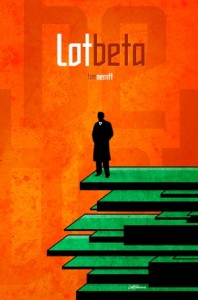Wonder Woman’s first broadcast appearance in live-action television was a television movie made in 1974 for ABC. Written by John D. F. Black, the TV movie resembles the Wonder Woman of the “I Ching” period. Wonder Woman (Cathy Lee Crosby) did not wear the comic-book uniform, demonstrated no apparent super-human powers, had a “secret identity” of Diana Prince that was not all that secret, and she was also depicted as blonde (differing from the brunette image established in the comic books).
TNT 861: Redonkulously Gargantuan

Hosts: Tom Merritt, Sarah Lane, Iyaz Akhtar and Jason Howell
Apple’s got more Burberry to cover, Google’s watch coming soon, Amazon invades retail warehouses, and more.
Guest: Myriam Joire
Download or subscribe to this show at twit.tv/tnt.
Submit and vote on story coverage at technewstoday.reddit.com.
Check out the full show notes for today’s episode.
We invite you to read, add to, and amend the wiki entry for this episode at wiki.twit.tv.
Thanks to Cachefly for the bandwidth for this show.
Running time: 48:24
SF Signal: [GUEST POST] Tom Merritt on His Science Fiction Retelling of King Arthur
John DiNardo over at SFSignal was nice enough to invite me to write a guest post about my new self-published novel “Lot Beta“. It was born of NaNoWriMo and an overdoes of Arthurian legend.
You can read the whole post over at SFSIgnal.com.
Tech History Today – Oct. 15, 2013
In 1878 – The Edison Electric Light Company began operation. They would go on to become more general. As in making up a significant part of General Electric.
In 1956 – Fortran, the first modern computer language was shared with the public for the first time. The IBM Mathematical Formula Translating System made John Backus a legend, kicked off modern programming, and is still developed to this day by the Fortran Standards Technical Committee.
In 2003 – China launched the Shenzhou 5, its first manned space mission, becoming the third country in the world to have independent human spaceflight capability. Yang Liwei piloted the capsule showing the flags of the People’s Republic of China and the United Nations.
Like Tech History? Purchase Tom Merritt’s Chronology of Tech History at Merritt’s Books site.
FR 144: You gonna eat that?

Hosts: Tom Merritt, Brian Brushwood.
Netflix said to negotiate with US cable companies for set-top box app, posting and watching videos online is a fast growing trend, and more.
Download or subscribe to this show at twit.tv/fr.
We invite you to read, add to, and amend our show notes at wiki.twit.tv.
Thanks to Cachefly for the bandwidth for this show.
Running time: 1:02:47
TNT 860: Trojan Pony

Hosts: Tom Merritt, Sarah Lane and Jason Howell
Bypass carriers for Windows Phone updates, Facebook buys mobile data optimizer, Netflix wants to partner with cable providers, and more.
Guest: Rob Reid
Download or subscribe to this show at twit.tv/tnt.
Submit and vote on story coverage at technewstoday.reddit.com.
Check out the full show notes for today’s episode.
We invite you to read, add to, and amend the wiki entry for this episode at wiki.twit.tv.
Thanks to Cachefly for the bandwidth for this show.
Running time: 47:54
Tech History Today – Oct. 14, 2013
In 1884 – US inventor George Eastman received a patent on his new paper-strip photographic film. It would reign for over 100 years until digital stole its thunder.
In 1977 – The Atari 2600 was released in North America, though Martin, in comments on our website says it was available in Macy’s and Sears on September 11.
In 1985 – The first official reference guide for the C++ programming language was published. It was written by the language’s creator, Bjarne Stroustrup.
Like Tech History? Purchase Tom Merritt’s Chronology of Tech History at Merritt’s Books site.
Nosillacast #440 Tech News Today, RadTech WaveJamr and Saidoka iPhone Dock, Tom Merritt on State of TV
I one again got the distinct pleasure of chatting with the amazingly intelligent and fun Allison Sheridan of NosillaCast. In her “Chit Chat across the pond” segment, we hash out the future of TV. I think we solved it! Maybe.
Get the episode here.
Tech History Today – Oct. 13, 2013
In 1884 – Geographers and astronomers adopted Greenwich as the Prime Meridian, making it the International standard for zero degrees longitude. Today the Greenwich observatory shoots a laser northwards at night to indicate the meridian. It is not a dangerous laser.
In 1983 – Bob Barnett, president of Ameritech Mobile communications, called Alexander Graham Bell’s nephew from Chicago’s Soldier Field using a Motorola DynaTAC handset. It marked the launch of the first cellular telephone network in the US.
In 1985 – The first observation of a proton-antiproton collision was made by the Collider Detector at the Fermi National Accelerator Laboratory in Batavia, Illinois.
Like Tech History? Purchase Tom Merritt’s Chronology of Tech History at Merritt’s Books site.
